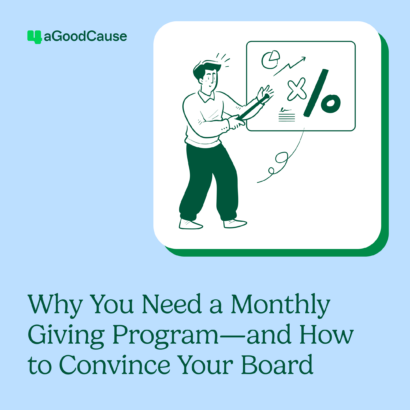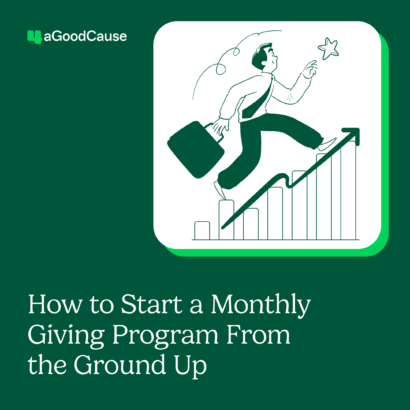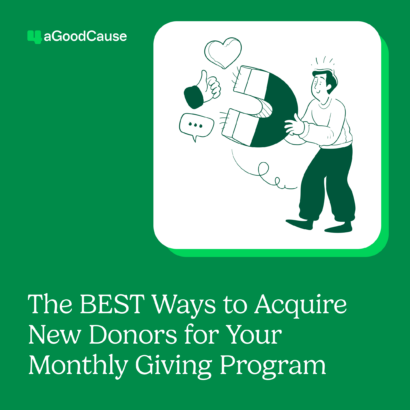While the basic must-have elements of your website remain the same year after year, overall web design trends, technology and plug-ins have short shelf lives. The average recommendation for upgrading and updating your website is every three years. While nonprofits may not have unlimited resources to make those website updates that frequently, there are things that you can watch for to ensure your home page is engaging and that you are making small changes to put your best stories forward.
Start with goals
What’s the saying? Don’t fix it if it isn’t broken. The same can hold true for your website although you need to define what “broken” means to you. In web talk, we’re not just talking about the functionality of your site. Your goals, and whether your website is helping you meet them, is a big part of the process.
- Is your website driving online donations?
- Is it clear who you are and what you do if users go no further than your home page?
- Are the right people coming to your site?
- Is your website adequately driving other conversions (e.g., volunteer sign-up, event registration, contact form fills)
- What do you see as the number one purpose of your website? Is that showcased on your home page or do users have to dig for what you ultimately want them to do?
Outline your website goals and assess where you are in making those goals a reality. Then, consider the changes you can make to your home page and internal pages to reach those goals faster. Once you know what your website should be doing you can move on to looking at how you can set up your site to do it better.
Start with your home page; it’s the first thing visitors see and the guiding map to where you want them to go. Here are a few ideas to get you started.
4 nonprofit website design trends
1. Embed video on your home page
You can use videos without sound on a loop in the hero (top) area of your website or use videos that have sound in other areas of your home page. Video is a great way to showcase your story with or without words; it brings to life the people and places you serve, giving a personal touch without having a direct conversation. Struggling for a stronger emotional appeal to your donors? Try updating key content areas of your site with video.
Example: Mama Hope
Check out the hero (top) area of this website for an example of how looped, no-sound video still provides a way to draw the audience in.
2. Give more than one action option on your home page
While concise messaging around who you are and what you do is key to defining your story, the visitors of your website have different needs and need to be directed accordingly. Use strong CTAs (calls to action) with bold colors or stand-out fonts to guide users in a way that easily informs them of their next step.
Example: Feeding America
This nonprofit uses the colors red and orange to identify key action items right on the homepage. The CTAs appeal to donors, volunteers and end-users. Follow the red and orange prompts to donate, subscribe, find a food bank or even choose how you want to get involved. The site does a good job of providing multiple options without being overwhelming or losing focus.
3. Implement time-sensitive features
Change up your website by adding pop-ups or sign-ups during specific giving periods or to alert visitors of urgent needs and programs. Think strategically about the timing of these as you don’t want to overwhelm visitors (or use features like these all the time—they lose their luster if they are always there).
Example: Boys & Girls Clubs of America
At the time of this blog post, BGCA was in a summer giving campaign urging donors to learn how to double their donation with a simple pop-up that appeared when someone visited the site. Others like them have used similar pop-up features for email list sign-up, special events or discounts to programs and education.
4. Create movement throughout your site
With the average time spent on a website under one-and-a-half minutes, you have limited time to engage them and entice them to stick around. Grab visitors’ attention with movement to draw their eyes exactly where you want them to go. Equally important to movement on your site is the ability for your website to be viewed on whatever device your visitors choose. Responsive website design is not a trend, it’s a must-have.
Example: Mercy Health Foundation
We love the movement features within the Mercy website. From the looping video and movement overlay of text in the hero space to the words that populate as users make their way down the page, this site is set up to move with its visitors. The site also succinctly provides easy navigation including 5 ways to give specific information on the 6 communities it serves. This is a good example for nonprofits with multiple programs or locations.
Build your website with actions in mind
Continuous focus on what you want visitors to do when they visit your website continues to be important. Using the above trends, think about how you can put emphasis on:
- Calls to action
- Donate buttons
- Sign-up forms
- Visual elements
- Your story and core values
And finally, don’t be afraid to use for-profit websites to guide you. Think about how you can utilize elements from websites that you find inviting to inspire donors to act. Many times it’s those ‘wow’ factor elements that make you stand out among the rest.



